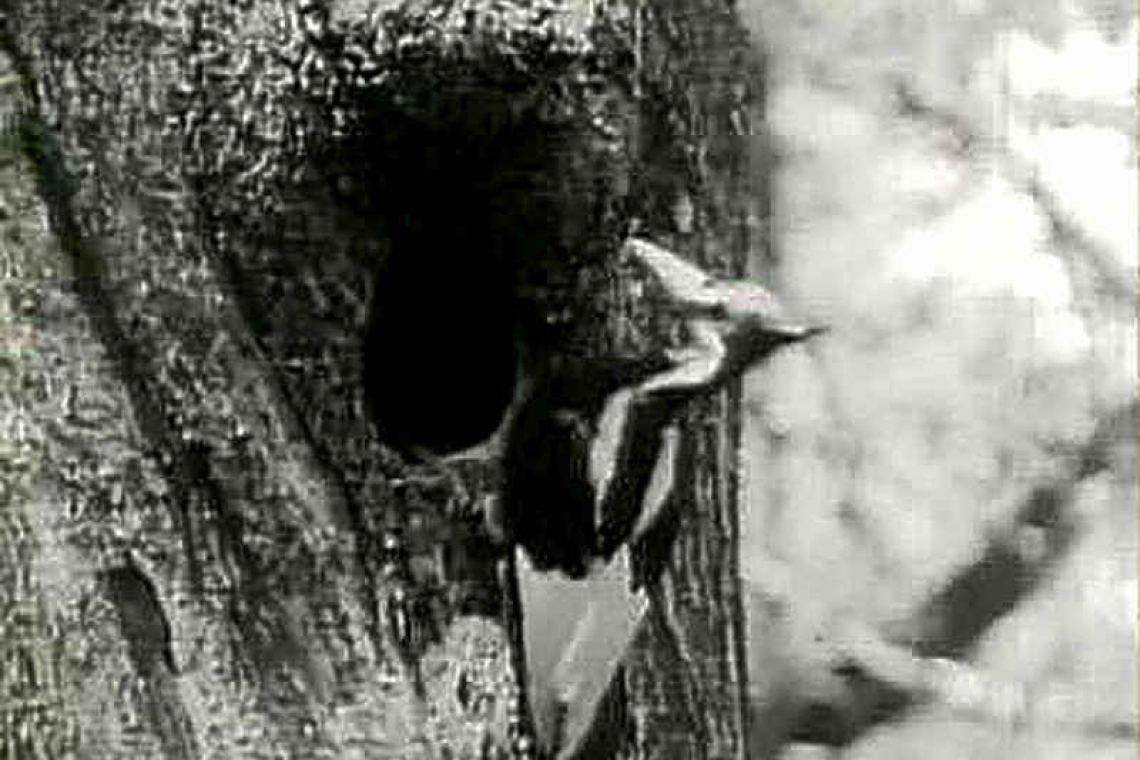The ivory-billed woodpecker was believed to have been seen in a remote part of Arkansas, ornithologists said on April 28, 2005. Several experts have spotted and heard at least one and possibly more ivory-billed woodpeckers deep in an ancient cypress swamp in eastern Arkansas.
WASHINGTON- - The ivory-billed woodpecker, whose last confirmed sighting was nearly 80 years ago, is one of 23 federally protected species that would be officially declared extinct - the most ever at one time - under a U.S. government proposal announced on Wednesday.
Although the woodpecker and some of the other creatures proposed for removal from the U.S. endangered species list have been functionally extinct for decades, scientists have warned that human-caused climate change and habitat destruction could make such disappearances more common.
"With climate change and natural area loss pushing more and more species to the brink, now is the time to lift up proactive, collaborative, and innovative efforts to save America's wildlife," said U.S. Interior Secretary Deb Haaland.
The U.S. Fish and Wildlife Service proposal would mark the largest group of animals and plants to be formally consigned to oblivion at once under America's main wildlife protection law, the Endangered Species Act (ESA), since it was passed in 1973.
Only 11 species previously listed under the act have been classified as extinct over the years, said Brian Hires, a spokesman for the Interior Department agency.
The 23 species now proposed for de-listing comprise a fruit bat, 11 birds, eight freshwater mussels, two types of fish, and a flowering plant in the mint family, the agency said.
The ivory-billed woodpecker, known to avid bird watchers as the "Lord God Bird," was America's largest woodpecker, but logging of old-growth forests in the U.S. South destroyed its habitat. Its last agreed-upon sighting was documented in 1944 in northeastern Louisiana, the service said.
Also on the list is Bachman's warbler, considered one of America's rarest songbirds. It has not been seen in the wild in the United States since 1962. The last documented sighting of the migratory bird anywhere was in Cuba in 1981.
Both the woodpecker and the warbler were first listed as endangered in 1967 under the precursor to the ESA, the Endangered Species Preservation Act.
Avian populations as a whole have diminished by nearly 3 billion birds in North America since 1970 amid rapid environmental changes linked to human activity, according to the wildlife service.
Eleven of the species proposed for classification as extinct are native to Hawaii and the Pacific Islands, falling victim to heightened risks posed by their very limited geographic range, the service said.
The wildlife service will accept public comment for the next 60 days, and a final judgment will be published on Dec. 29, Hires said.
The Endangered Species Act has had some success stories, too, with 54 species removed from protected status due to their recovery, including the American peregrine falcon and bald eagle. Another 56 species have been "down-listed" from endangered to threatened. A total of more than 1,600 domestic animal and plant species are currently listed, Hires said.







